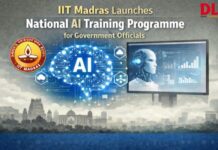Did we miss knowledge?
Often the modern world is associatedwith rapid change, high speed, fast growth and etc. However, all these factor fallout aside in comparison with today’s development and “electonification/knowledgefication” of the world. Nowadays, we can put “e”/”k” behind everything and find them in the internet or World Wide Web. This change brings a big mass of information to our world. The importance of information decreased in one sense and increased in another. The decline informational importance occurred in sense that you can find dozens of web pages which includes the information which you need. Amplification occurred in sense that only competitive information or competitive knowledge began to create difference. Knowing explicitly what, where and how starts to create difference in modern world. On the other hand, organizations start to look for the new opportunities. One of these became e-nvironment, the place where you have equal conditions to compete. Boom of dotcom; provoke many people to invest heavily in the electronic area.
However, as BCG matrix emphasize heavily investment on stars never means immediate income from them. Actually, one of the problems of that ‘crises’ was high expectations and promises, which means lack of knowledge. (M.Porter, March 2001.) As M.Robert (2000) pointed out in his book, this is an era of denial or paranoia. Paranoids were those who tried to do everything and anything they can think of with the internet and knowledge. Though, as author
continues neither denial nor paranoia is solution. The solution could be to understand the capabilities (knowledge, information, etc.) and how they could be used by the company. However, before attempting to understand the new world, one needs to understand the organizational strategy for e-ducation of the institution. (M. Robert (2000), p 6-7.) In other words, the same content of strategy for e-ducation has to be understood and transformed into the new context of the new world – eworld or k-world. Generally, developing strategy for education (even in “e” or “k” world) with its dimensions means running from the content, through the process, to the context. That means strategy could not be perceived without its dimensions which are not different from each other, rather than complimentary. (de Wit & Meyer (dW&M) (2004), p.5) Therefore, even this paper will focus on the process dimension it will include and emphasize others as well. The desire to understand today’s complexity and confusion encouraged me to try to relate two strategies for education processes in one and create simplicity. Moreover, during the preresearch of the literature I have not found any explicit academic research on that topic. Even these two topics were quite “fresh” for the strategy literature. <!–Ads1–>
The paper begins with a brief overview of “e” and “k” strategy and its current focus on organizational resources and capabilities for education. It links these strategies in the content dimension of the strategy process for e-ducation. Building on this view, it presents an interrelated developing process of strategy transformation to adapt to the gradually/evolutionary changing environment for e-ducation.
e-Strategy
Changes in IT industry and in the whole world force companies to turn to the IT and develop appropriate strategies on the organizational level. E-strategy can be regarded as one of these strategies. (M.Porter, 2001) Therefore organizations focused on estrategy process for e-ducation as on a codified set of steps that first of all “demystifies” the Internet. On one hand, the e-strategy process itself drives you to think about what information processes you have in
place today, how your functions relate to each other and to your teachers/senders and students/ receivers. Then, added to that, is the e-effect of e-ducation, or the impact that the Internet will have on those things. (M.Robert (2000), p. 107) Briefly, e-strategy gives you an opportunity to move your organization to the electronic environment and operate there on the organizational level. Therefore, operations in e-nvironment require organizational level strategy which is the e-strategy for that specific environment.
K-strategy
E-ducation organizations are coming to view knowledge as their most valuable and strategic resource, and bringing that knowledge to bear on problems and opportunities as their most important capability. They are realizing that in order to remain competitive they must explicitly manage their intellectual resources and capabilities. However, many executives still have a problem with managing their capabilities-knowledgethat can help them to link knowledge oriented processes to organization strategies, and are unsure of how to translate the goal of making their organizations more intelligent into a strategic course of action. In other words, they lack of k-strategy (knowledge strategy). (M.Zack, 1999) Knowledge strategy implies a notion of knowledge-based strategy, that is, competitive strategy built around institution’s intellectual resources and capabilities. Knowledge strategy is oriented toward understanding what knowledge is strategic and why. (N. Bontis and C. W. Choo, (2002), p.270-271)
Link between strategies
Concerning the fact that both strategies are based on organizations capabilities and resources to have/ create strategies and to develop them, these strategies in their content can be formulated and understood from resource-based view (RBV). (dW&M (2004), p.284) In the RBV, organization resources gave them competitive advantage to create sustained competitive advantage that will directly mirrored in their strategies. Therefore, here I will try to find links between e-strategy and k-strategy for e-ducation and vice versa. Both strategies have several patterns which can be generalized according to the e-strategy for e-ducation (internet as a process) book of M. Robert, where he states that generally estrategy is intangible, trying to focus on moving, evolving target. (M.Robert (2000), p.19). Those general patterns in broad sense could be applied to every strategy. However, concerning the structure of k- and estrategies that patterns like intangibility and evolvement can be particularly observed in knowledge area/e-ducation where every moment means new person who shares it. And particularly neither knowledge nor electronic e-nvironments are intangible. Consequently, the new world/society becomes more and more dependent on information, this shift lends itself perfectly to the Internet and should be properly managed e-ducation by the right k-strategy which will intersect with the e-strategy on the rapidly and evolving Internet area. (Ibid, p. 29). Since the Internet is primarily a <!–Ads2–>
transporter of information, the more the society becomes dependent on information, the more disruptive the Internet will be to institutions. This is why the institutions most threatened by the Internet today are those with a product or service mostly based on information, which means there comes a new era of e+k–strategy (further estrategy= k-strategy will be used as e+k-strategy model) . As it can be observed from the picture the strategy, which will help organizations to move (process) to the new world or new environment and even in new circumstances (context) have an ability to properly manage its capabilities and resources (content). As an example, at Amazon.com, has information on 17 million of its ustomers. (Ibid, p.32) These databases allow Amazon.com to know exactly the current interests of its customers and their future interests as well. Simply by e-mail address Amazon.com is able to do one-to-one providing of new book/knowledge.
Developing Interrelated Strategies
After the dot-com fallout, surviving companies/organizations needed to sharpen strategy and analyze metrics much better. (M. Epstein, 2004) Since the world entered into the new world, institutions have to reviewtheir strategies and develop a new one. Therefore, I consider the importance of the k-strategy which will provide necessary knowledge to organizations to develop (which also means change in strategy formulation process) e-strategies for the new conditions. In other words, I consider these changes as a ways of encouragement to develop or interrelate these strategies in e+kstrategy model for e-ducation the new e-nvironment, which will form and be part of new world. For that reason, I will mainly refer to the combination ofM.Robert’s book on “E-strategy” and M.Zack’s article on “Developing a Knowledge Strategy: Epilogue”. However, that part will not be limited with these sources only and will provide combination of other publications.Hence, one million of questions come in the mind of most of administrators, what should I do? How should I do it? ho knows the solution? The answer is simple, nobody knows. But, in order to make the picture clearer or eradicate fuzziness I will try to combine the ways of k-strategy development with the e-strategy development in order to create a common picture and prove that strategies for e-ducation in process may be interrelated and similar concerning certain merits and aspects. According to several strategy guru’s the best way to develop e-strategy in the frame of organizational strategy it is better to start with your employee. (M.Robert (2000), p.33) That could be easily supported with the k-strategy development process which focuses on organization/society capabilities and sources on employees. Consequently, we know with whom or who will develop/change our organizational/institutional strategy towards the new model e + k-strategy model in e-ducation world. So, where should we start? That point is very important and may be most of you will have a feeling that this paper repeats the traditional way of strategy formulation. (dW&M (2004), p.7) However, I can argue and say that the process in general always or in most of the cases remains stable. The things, which make/create difference, are tiny pieces of similar/ huge process. Thus, I think that every administrator or person who will start to develop this model should first of all be able to understand new world/Internet and structured process for e-ducation that works. Any strategy must be oriented toward the future. Thus, the first phase in formulating a clear organizational strategy (for education) is to determine what the e-nvironment will look like in a few years down the road. (M.Robert (2000), p.33) As Business Week observed in an article about the future impact of the Internet: “It is difficult to determine how to improve something when you do not know what it is that you want to do. Our experience has shown us that most people in organization do ings right. Unfortunately, they are frequently blamed for doing things wrong.” (A. Slywotzky, 2000) In other words, they are doing things right but doing the wrong things. So, it is important to get people to identify the right things to work on, to help people who do things right to work on the right things. Another way to develop interrelated strategies is the right measurement. For that kind of measurement there should be developed appropriate metrics/e-tools. (Tony Ingram & Alison Hedges, 2004) The selected metrics will likely include a combination of input, processes, output, and outcome metrics to effectively measure performance. There is no rule for the right number of metrics to include in a measurement system; however, including too many tends distract administrators from pursuing a focused strategy. (M. Epstein, 2004). These analyses ensure that each unit is making a contribution to the e-ducation initiative and improving organizational effectiveness. Additionally, these metrics can be used to provide a gap analysis that permits administrators to determine what other inputs or processes are required to meet the organization’s e-ducation project
objectives. Similarly, Zack (1999) points in his article that he observed many organizations whose strategy dictated a move to an e-nvironment model without the requisite knowledge and skills and a knowledge management initiative to address those knowledge gaps. Others were migrating from providing outputs to providing knowledge-based services and solutions for e-ducation, without their first understanding what they knew (or did not know) about being a service provider, or identifying the unique value (if any) to be found in their existing knowledge. So, how to know what I or my organization know? To identify what you know (later part will use Zacks’(1999) suggestions) usually starts with some type of knowledge mapping process. That means to map existing knowledge against what is required to formulate and execute the organization’s strategy for e-ducation. Further, the map can be used to evaluate how an organization’s knowledge about e-ducation compares to its “competitors”. If we think of strategy as defending knowledge positions rather than “market” positions, then competitive knowledge benchmarking is crucial for evaluating the organizations “competitive” position. Where an organization holds a strong strategic knowledge position about e-ducation, it may be prudent to invest to maintain that position. Where it holds a weak knowledge position, it may be prudent to invest to gain strength. These knowledge management decisions must be made within the context of knowledge-based competitive opportunities and threats. It is also crucial to know what “competitors” know. Some organizations try to know that via intelligence or similar scanning function. However, most intelligence functions attempt to identify what “competitors” are doing, not what they know about e-ducation. On the other hand, Zack (2002) suggests that those who want to learn may be become and ultra-aggressive organizations. Those, who proactively transfer their knowledge out of the institution to accelerate the learning cycle via e-strategy that approach is frequently applied in software industry. An example of perhaps the most aggressive strategy is that of the open-source movement used, for example, to develop the Linux computer operating system, which makes public the core source code to take advantage of those innovations others may develop. (E. S. Raymond, 1998) Knowledge is not static and what is innovative knowledge today will ultimately become the core knowledge of tomorrow. The similar trend can be observed in e-nvironment today’s innovative product – e-ducation can became tomorrows’ core knowledge/ competitive advantage.
Discussion
This paper mainly focuses on the interrelation of these two strategies in the context of strategy processing for e-ducation. However, it could be argued that different developments are unique in their occurrence and interrelation may create a catastrophe as Einstein’s atom, which was interrelated to the nuclear weapon. Another contradictory argument may come from knowledge strategist who will argue that this strategic development has nothing to do with the e-strategy, at least because they are applied in different worlds. And even, going deeper they can bring up the argument that these two different strategies have different starting points and different destinations so, their processes could never be interrelated or at least linked. On the other hand, considering these arguments I can emphasize the fact that the world is becoming more global and smaller at the same time; nowadays, the news/information flow all over the world in a second. And there is no possibility to stop it. Those floods are mainly supported by the electronic devices or let us ay e-nvironment. Regarding that fact it is even too late to orry bout its impacts because the process already started and it is impossible to stop it. According to the M. Roberts, technological change takes 25-30 years to find a valuable application and another 50 to 70 years to infiltrate all the nooks and crannies of the society that it will eventually affect. (Ibid, p.40) As an example he gives a microprocessor which was found in 1960 and still applicable, even it had its impacts after 18 years. Later he points that the same is true of the Internet and it was invented in 1968. Therefore it means this new development have not yet applied to all parts of our life. It only starts to affect the e-ducation/ world in late 1990. Therefore, I personally think even these different strategies may have different starting point but, they go in the same destination. All this happens with the aim of increasing organizational “competitiveness”, “uniqueness” and etc. which in new world will mean going “e”. And being there will require resources and capabilities which are basics of k-strategy. For example, (referring back to the picture) the starting point in soccer, volleyball, basketball, etc. is a ball content) and destination point is the basket/gates (context). Here, goal (destination) is to win and process is to play. Therefore, even if it seems to you that this paper tries to predict the future I would call it as another scenario analyze for the nowadays trends.
Conclusion
In the conclusion I would like to come back to M.Porters’ words: Don’t throw the strategy baby out with the Internet bath water. And probably will add there following phrase: Instead wash him/her with the knowledge soap and teach/e-educate him/her how to use this beauty (knowledge) in the slippery Internet bath. It is obvious to all of us that being paranoiac while experiencing a new process will not help us to survive in today’s world. Therefore, we have been more creative and innovative in the process of our strategy fulfillment. In this way we exploit, explore and as was mentioned in this paper interrelate/link different ways/processes to get better results. Even these ways may seem quite strange and fresh (for some even old and musty), the difference which we may create is lying in ourselves, in our knowledge. Here I tried to provide an idea that this uniqueness can be strengthened in combinatory way and help to get advantages in e-ducation. However, that work characterizes only a different outlook which has not been tested yet. But, again using your knowledge you can judge whether that way is appropriate to you or not. ?
























